Adding Sound to your Models
By Tim Surtell
The 'playability' factor of many Meccano models can be considerably enhanced if they are capable of producing suitable sound effects. For example, a military model could could emit the sound of gunfire, a model of an emergency vehicle could have a wailing siren, and a model steam locomotive could produce a 'chuff-chuff' sound.
Producing the sound of gunfire, or any other type of sound, would be tricky to do but for several special sound effects ICs which are available to easily do the job. Because these ICs have been designed for use in toys, they are easy to use and require minimal external components. Unfortunately, they do not all have the same facilities, and so they all have different application circuits.
The UM3561 sound effect generator IC would be a good choice for models of emergency vehicles since it produces police car, fire engine, and ambulance siren sound effects. Which effect is played is determined by the connection of pin 6 to Vs, 0V, or nothing, as shown in the table below:
Sound Effect |
Pin 6 |
Police Car Siren |
No Connection |
Fire Engine Siren |
Vs |
Ambulance Siren |
0V |
In addition, a pulsating machine gun sound effect, which could be useful in a military model, can be played at any time by connecting pin 1 to Vs.
| Datasheets | UM3561 Sound Effect Generator IC - PDF format (213kb) |
The pin-out of the UM3561 is shown in figure 1. Pin 1 is the pin on the bottom left when the IC is held horizontal with the writing the correct way up. The little notch in one side also helps to identify pin 1, as does the small white dot next to this pin.
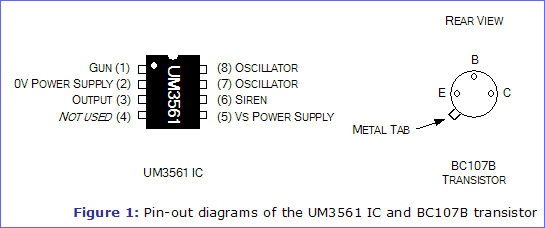
The IC's power supply (3V DC) should be connected between pins 5 and 2. The sound effect output from pin 3 can be connected either to a piezoelectric sounder or to a small 8Ω, 0.2W loud-speaker via a BC107B transistor.
In the circuit diagram of figure 2, pin 6 has been connected to the common terminal of an SPDT centre-off switch so that any of the three siren sounds may be be produced when the power is on. The machine gun sound effect can be played by pressing the Gun button when the power is on. Of course, should you only need to use one of the effects, you could hard-wire pins 1 and 6 as appropriate.
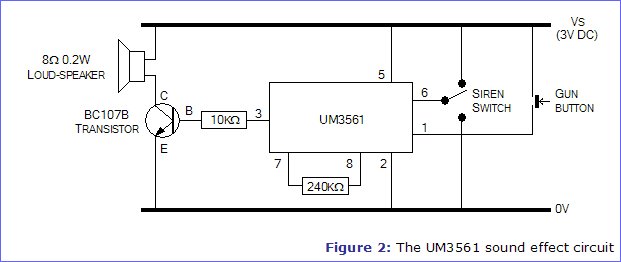
Several versions of the M66T melody generator IC are available, each of which plays a common tune such as "Happy Birthday" or "Jingle Bells". These ICs are powered from 1.2V to 3.6V DC, and are extremely easy to use: just connect up the power and a small 8Ω, 0.2W loud-speaker as shown in figure 4. No other components are required.
| Datasheets | M66T Melody Generator IC - PDF format (50kb) |
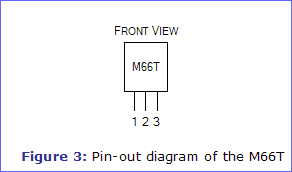
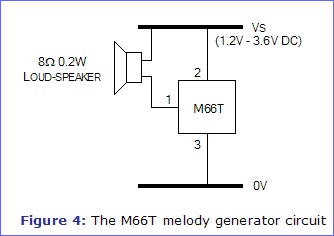
A stripboard layout for the UM3561 sound effect circuit shown in figure 2 is given in figure 5, and it will allow all four sound effects to be produced.
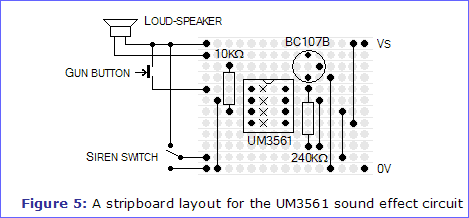
Article Information
Source: Electronics in Meccano - www.eleinmec.com
| First published in EiM: Issue 9 (September 2000)
Topic: Analogue Electronics |
Created: 18/02/2007 |
Last modified: 18/02/2007
Top of Page | Homepage | About | Search | Topics | Features | Circuits Shop | yourEiM |
© 1998 - 2024 Tim Surtell |